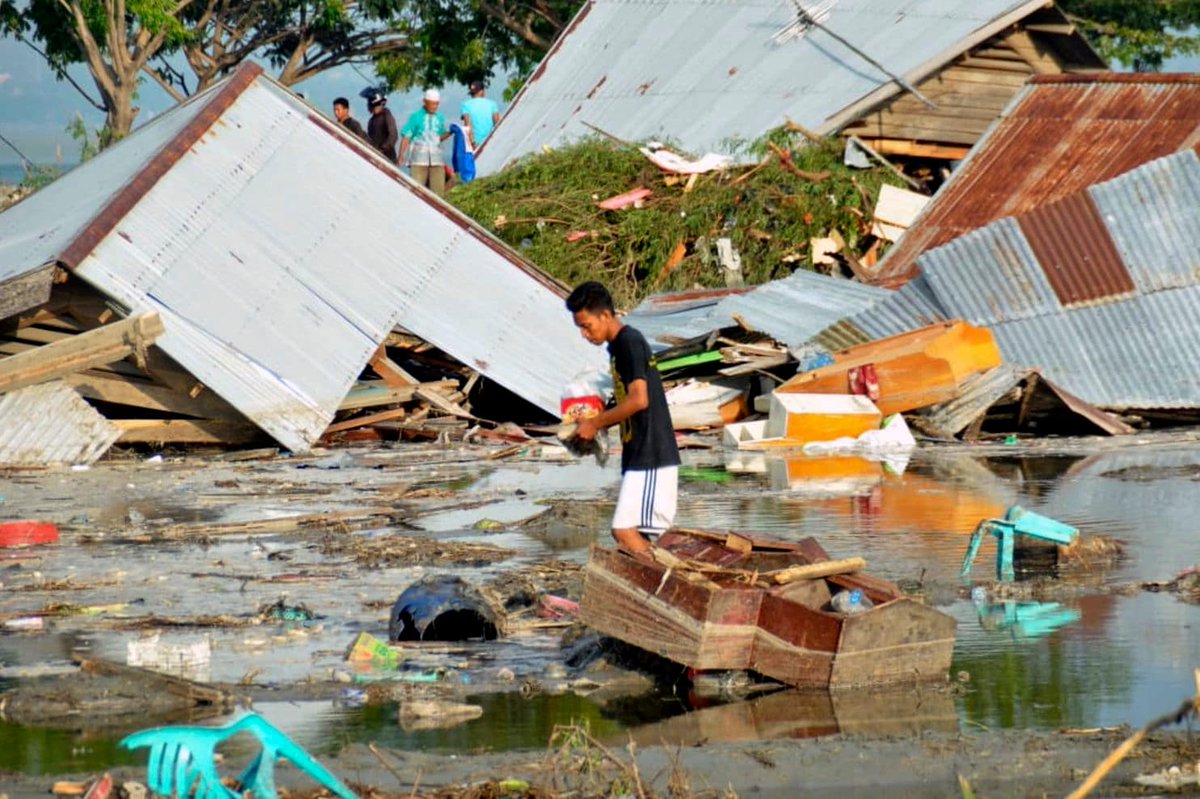Indonesia's fickle earth quake spares some while destroys others at epicenter

- Country:
- Indonesia
Just 500 metres from the epicentre of the earthquake that triggered a wave of destruction in Indonesia, a modest wooden home built on hollow concrete foundations in Lende Induk village stands completely and remarkably unscathed.
A few kilometres away, along the main road of its sister village, Lende Tovea, scores of homes - many built with reinforced concrete - were completely destroyed by the violent shaking, leaving a mess of rubble neatly covered by fallen tin roofs.
The contrasting scene in the hamlets nestled between the coast and lush hills visited by Reuters on Saturday illustrates the fickle effects of the major 7.5 magnitude quake and ensuing tsunami that battered Palu, a coastal city 78 km (48 miles) to the south, on Sept. 28.
More than 66,000 buildings were badly damaged and at least 1,649 people were killed in the disaster but neither the quality of building construction nor proximity to the quake explains why some areas were destroyed and others nearby left relatively untouched.
Zainar, 38, who lives in the intact house closest to the epicentre, was inside when the quake struck.
While the house built a year ago held strong, she said everything inside was broken.
“There was a monstrous shaking and everything inside fell over. We can’t use anything,” Zainar told Reuters.
“Luckily, by the grace of God, our house didn’t collapse. I don’t know why,” she said.
Mudrik Rahmawan Daryono, an earthquake expert from the Indonesian Institute of Sciences who did his doctorate on the geology around Palu, said an unusual web of fault lines that intersect the area helped explain the discrepancies.
There are four main interconnected fault lines active in the area and a multitude of smaller ones that radiate from them.
The immense energy created by the slippage of the tectonic plates underneath Lende Induk tracked the ruptures.
"It is clear based on the satellite image that one of the major fault lines, the Palu segment, is responsible for the quake," he said. "It goes through the city and the sea."
He said earthquakes cause greater damage where the soil is softer with higher saturation levels from groundwater.
CHURNING QUAGMIRE
At its extreme during powerful quakes, the soft, wet soil produces liquefaction, turning the ground into a roiling, muddy liquid.
In Balaroa and Petobo, two sub-districts in the south of Palu hit by extensive liquefaction, hundreds of people were killed and countless homes destroyed, many sucked into the churning quagmire.
Rescuers retrieved dozens of bodies from the areas at the weekend. Many victims are believed to be buried under metres of mud and debris.
The imam of Lende Tovea, Launi, knows little of seismology but has been pondering the fickle disaster.
He was inside his mosque along with the village chief, Rahman Lakuaci, listening to the call to prayer by the muezzin, Darwis, when the earthquake struck.
Within five seconds of the first impact, Lakuaci said the mosque collapsed. Lakuaci escaped but Iman Launi was trapped inside, rescued by villagers four hours later.
Darwis was killed instantly, one of the dozens in the area Lakuaci believes perished. He said 70 per cent of homes had collapsed.
Sitting under a tarpaulin in front of his obliterated home, a mangle of shattered timber and broken concrete surrounding an immaculately intact green cupboard, the imam said shocked worshippers had questioned him about the quake.
"I tell them this is a test from God,” he said, smiling congenially.
"I say 'don’t let this shake your faith. It’s troubles like these that bring us closer to God'.
(With inputs from agencies.)










